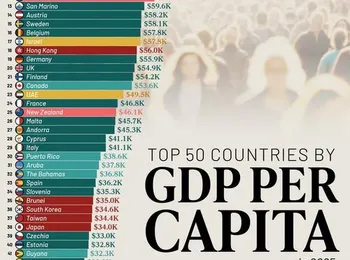South Korean initial exports data for May reveals a significant downturn, experiencing a 23.8% year-on-year decrease in the first ten days of the month. This concerning figure highlights a challenging start to the export performance for South Korea in 2024. Analysts are closely monitoring these early figures as they provide an initial indication of the broader economic trends impacting the nation’s trade balance. The decline is attributed to a confluence of factors, including weakened global demand, particularly in key export markets such as China and the United States, alongside ongoing geopolitical uncertainties that are disrupting international trade routes and supply chains. Furthermore, the won’s recent depreciation has made South Korean products relatively more expensive for foreign buyers, contributing to the reduced export volumes. The data underscores the vulnerability of the South Korean economy to external shocks and emphasizes the need for proactive measures to mitigate potential risks. Government officials are expected to release a more comprehensive export report later this month, which will offer a more detailed analysis of the situation. However, these preliminary figures already point to a potentially difficult year for South Korean exports, demanding careful attention and strategic adjustments from businesses and policymakers alike. The immediate impact of this decline is likely to be felt across various sectors, including shipbuilding, electronics, and petrochemicals, all of which rely heavily on international trade. Understanding the precise drivers behind this decrease is crucial for forecasting future trends and implementing effective strategies to bolster export competitiveness. The initial data suggests a potential need for diversification of export markets and a renewed focus on innovation and value-added products. Moreover, ongoing efforts to strengthen bilateral trade agreements and address trade barriers will be critical in supporting South Korea’s export ambitions. The overall impact on the South Korean economy will be assessed in light of broader economic indicators, including consumer spending, investment, and manufacturing output. This early data serves as a critical warning sign, prompting a reassessment of economic forecasts and highlighting the importance of proactive risk management. Continued monitoring of global trade dynamics and close collaboration between government and industry stakeholders are essential to navigating the challenges ahead and securing a sustainable path for future export growth.
The situation demands a nuanced understanding of the complex interplay between domestic and international economic forces. Analysts are anticipating a prolonged period of adjustment as the South Korean economy adapts to the new export realities. The focus will be on identifying opportunities for growth in sectors less reliant on traditional export markets and on developing strategies to enhance the competitiveness of South Korean products in the global arena. Furthermore, policymakers will be under pressure to implement measures that support businesses struggling to cope with the decline in export orders, while simultaneously fostering an environment conducive to innovation and investment. The success of these efforts will depend on a coordinated approach involving government, industry, and academia. Addressing the underlying causes of the downturn – including global demand fluctuations and geopolitical risks – is paramount. This will require close engagement with international partners to promote trade liberalization and reduce barriers to South Korean exports. Ultimately, the challenge facing South Korea is to transform a period of export weakness into an opportunity for sustainable economic growth. This necessitates a strategic shift towards higher-value products, increased technological innovation, and a more resilient trade strategy. The ability of South Korean businesses to adapt and innovate will be a key determinant of the nation’s economic performance in the years ahead.
























